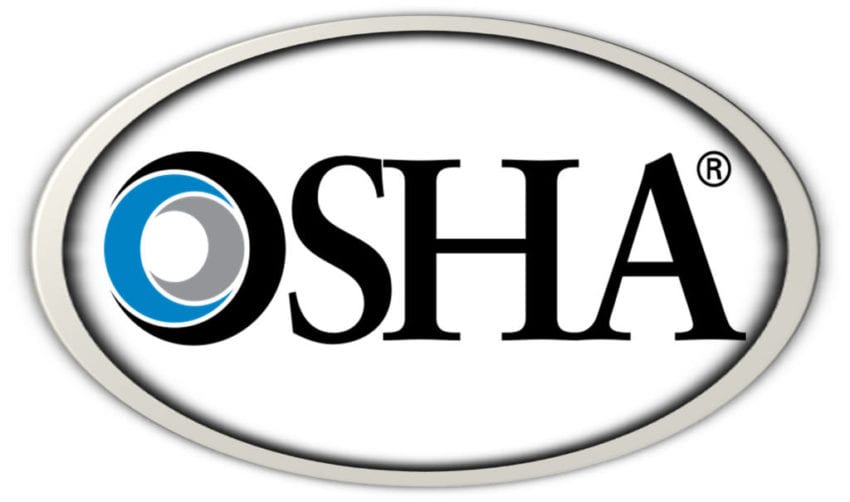We’ve written articles on what to do during an OSHA inspection and, mostly recently, the focus seems to be on OSHA fall protection. But OSHA is focusing on making sure injuries get properly recorded, and so there’a a new rule requiring companies to make all injury and illness data publicly accessible. This new Labor Department OSHA public workplace injury database will go beyond the current requirements of companies having their own database of injuries and accidents. One thing is for certain, there are more and more “rules” being implemented across the construction industry. Just last week we heard about the new overtime rule implemented by President Obama.
OSHA Public Workplace Injury Database Requirements
OSHA already requires many American employers to maintain a record of injuries and illnesses, however, the process for accessing these claims and information is difficult since theres no centralized database. Of course, having a centralized OSHA public workplace injury database is a bit of a contentious issue with some freedom advocates. The new Improve Tracking of Workplace Injuries and Illnesses rule, modifies the current OSHA Recording and Reporting Occupational Injuries and Illnesses regulation by requiring employers (at least the ones in high-hazard industries) to send injury and illness data to OSHA. This information will be posting on an OSHA website which will come online shortly.
“Since high injury rates are a sign of poor management, no employer wants to be seen publicly as operating a dangerous workplace. Our new reporting requirements will ‘nudge’ employers to prevent worker injuries and illnesses to demonstrate to investors, job-seekers, customers and the public that they operate safe and well-managed facilities. Access to injury data will also help OSHA better target our compliance assistance and enforcement resources at establishments where workers are at greatest risk, and enable ‘big data’ researchers to apply their skills to making workplaces safer.”
– Dr. David Michaels, assistant secretary of labor for OSHA
Because of the recent series of rules and regulations—many from OSHA—both association members and construction industry professionals aren’t exactly tickled by the new forced requirements of the OSHA public workplace injury database. For one, they don’t do anything to mitigate workplace injuries and illnesses. One of the main concerns seems to be that having a single searchable database of workplace injuries and accidents does nothing to paint a total picture of a business’ safety record. There’s also a concern that the additional burden and regulation requirements will ultimately result in a disclosure of sensitive and proprietary information on worker injuries.
For years, OSHA has maintained that employers could record jobsite and worker injuries without the fear of disclosure. This is particularly important for public companies whose stock values are going to potentially be affected by vague or uncertain “injury” disclosures which might include such things as heart attacks, bee stings, or other incidents not caused by negligence.
The Department of Labor believes that making this OSHA public workplace injury database publicly available will help prospective employees understand whether or not a company is a relatively safe place to work in comparison to other companies. The hope is that this makes employers more competitive in ensuring injury prevention is a factor in employment decisions. Of course, that also presupposes the situation is that employers are dealing with an overabundance of potential hires who are looking for the best places to get work—that doesn’t seem to be the case in many cities.
The final OSHA rule will also facilitate the ability for an employee to report injuries and illnesses without any fear of retaliation, but we’re not sure how that will practically work, since we imagine the reporting system will need to be updated and maintained by the individual companies. The rule does clarify that employers need to maintain a straightforward procedure for documenting and reporting workplace injuries and ensure that no policies discourage such reporting by employees.
On a good note, privacy issues are addressed by the fact that OSHA claims it will remove all personally identifiable information associated with the data before it becomes publicly accessible.
OSHA says the new reporting requirements will phased in gradually between 217 and 2019.
OSHA Public Workplace Injury Database Specifics
- Affects companies with 250 or more employees in industries covered by the recordkeeping regulation
- July 1, 2017 – Information needs to be submitted from 2016 Forms 300A
- July 1, 2018 – Information needs to be submitted from 2017 forms (300A, 300, and 301)
- 2019 – All workplace injury information from forms must be submitted by March 2
- Establishments with 20-249 employees in certain high-risk industries (including construction and manufacturing) must submit information from their 2016 Form 300A by July 1, 2017, and their 2017 Form 300A by July 1, 2018
OSHA State Plan states must adopt requirements that are substantially identical to the requirements in this final rule within six months after publication of this final rule. The new requirements take effect August 10, 2016, with phased-in data submissions beginning in 2017. The final rule is available on Federal Register here.


